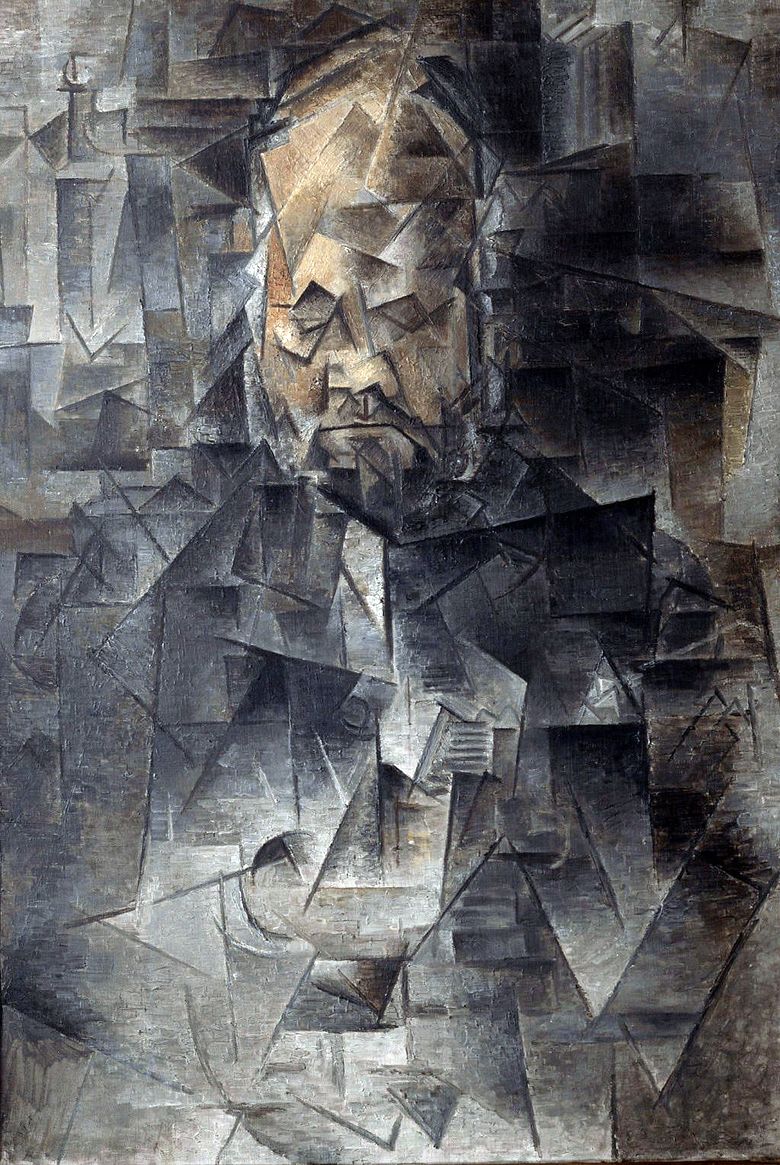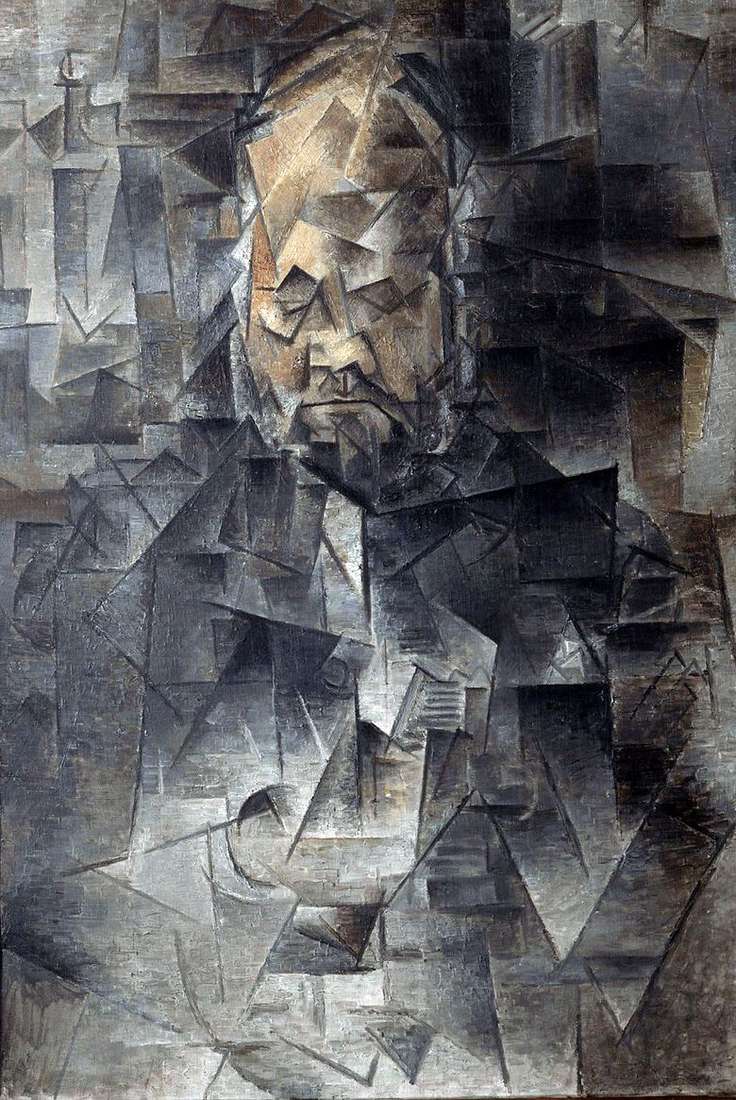
The amazing work of the great Picasso. The picture was created in the winter of 1909-1910 and marked the birth of a new style – analytical or stereometric cubism.
The direction itself focuses on the reincarnation of space through simplification and rationalization, as a result we get the world around us, composed of simple geometric shapes, without losing volume.
Ambroise Vollard was a well-known collector, publisher, and art dealer. For material and moral support, he was grateful to many outstanding artists – Gauguin, Cezanne, Van Gogh. Vollard gave patronage and Pablo Picasso, although he did not accept his revolutionary cubism.
The portrait of Ambroise Vollard is reminiscent of a broken mirror, the reflection of which managed to save the face of the star in a miraculous way. All fragments of the picture are dismembered and at the same time assembled into a single harmonious construction of pure crystals.
Despite the original style of writing, contemporaries agreed that this portrait is the best ever written, even in a realistic manner. By the way, among the authors who wrote this prominent person all the stars of the artistic world are Renoir, Valloton, Cezanne, Denis, Bonnard. Not without pleasure, Vollard himself recalled how the little four-year-old son of one of his friends, when he first saw the portrait of Picasso, exclaimed: “This is Uncle Ambroise!”.
And in fact, everyone who knew this patron of the arts agreed that Picasso managed not only to achieve striking similarities, but also to convey more subtle nuances like character and habits.
In the picture we can see and note Vollar’s flat nose, straight high forehead, closed eyes, dramatic facial expression, Picasso gives the viewer even the back of the hero’s head. The clothes feel scrupulousness and elegance, as indicated by the snow-white shawl, looking out of pocket.
The colors are monochrome and not contrasting – the main role here is played by the complex geometric structure. Yellow, black, gray and brown shades that smoothly merge into each other prevail.
Soon the creation, the portrait was bought by merchant Sergei Schukin and transported to Russia. The picture is still in the State Museum of Fine Arts. A. S. Pushkin, being generally recognized as the best masterpiece of analytical cubism.
 Portrait d’Ambroise Vollard – Pablo Picasso
Portrait d’Ambroise Vollard – Pablo Picasso Retrato de Ambroise Vollard – Pablo Picasso
Retrato de Ambroise Vollard – Pablo Picasso Houses on the Hill by Pablo Picasso
Houses on the Hill by Pablo Picasso I, Picasso by Pablo Picasso
I, Picasso by Pablo Picasso Self Portrait by Pablo Picasso
Self Portrait by Pablo Picasso Woman Sitting in a Chair by Pablo Picasso
Woman Sitting in a Chair by Pablo Picasso Portrait of Gertrude Stein by Pablo Picasso
Portrait of Gertrude Stein by Pablo Picasso Portrait of Olga in the chair by Pablo Picasso
Portrait of Olga in the chair by Pablo Picasso